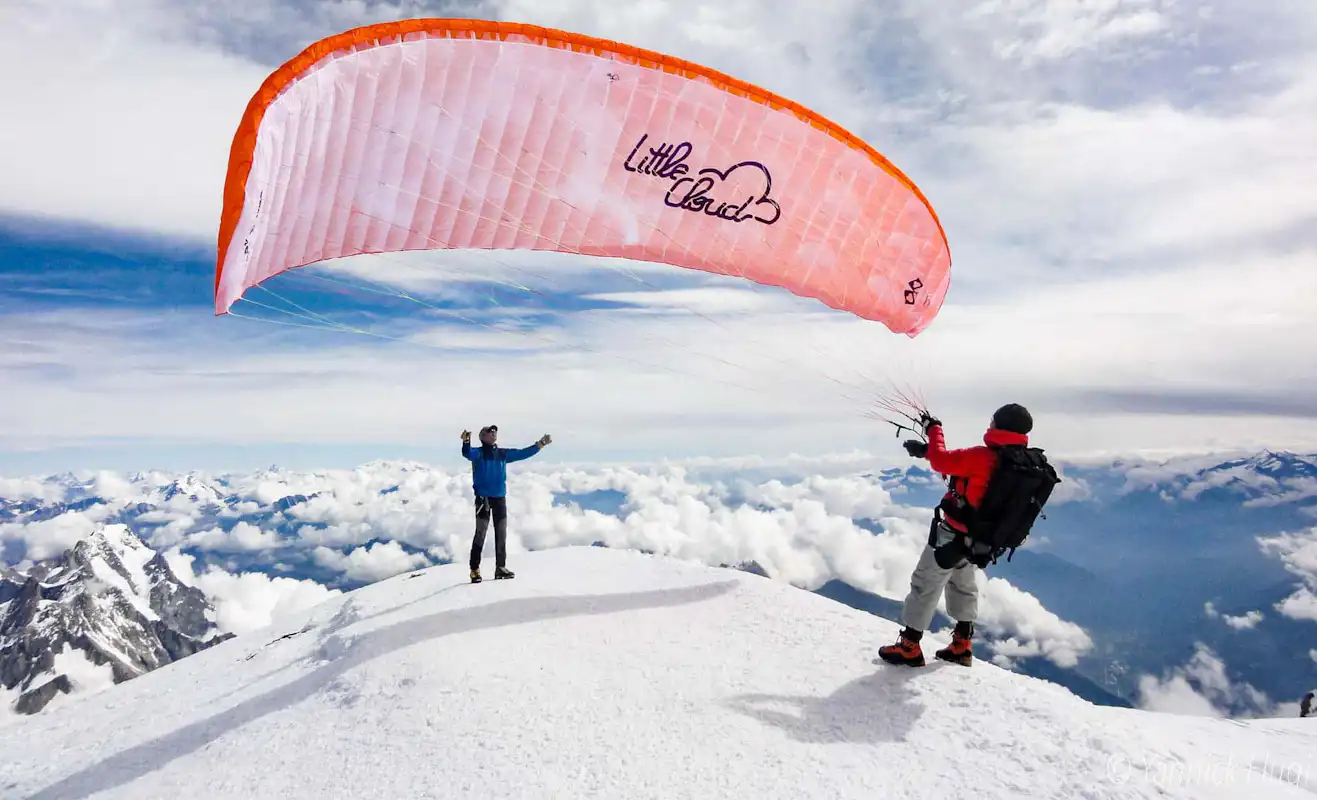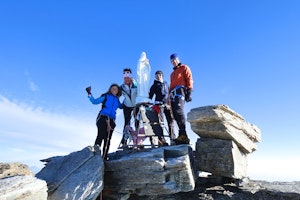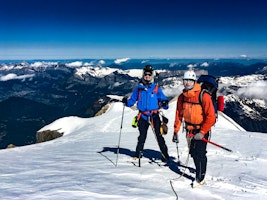Paralpinism ―a combination of the words paragliding and alpinism― is an outdoor activity which consists of climbing a mountain and then descending using a paraglider. It’s also known as flying & mountaineering or hike & fly.
This thrilling discipline is relatively new and has been growing fast in Europe, with the high peaks of the Alps as the main playground. In 2006, paralpinism was recognized as a mountain sport by the Fédération Française des Clubs Alpins et de Montagne (FFCAM).
Unlike regular paragliding trips, a paralpinism adventure begins by climbing up a mountain. Depending on the difficulty level of the peak, it may be necessary to have mountaineering skills, like walking with crampons and using an axe. Acclimatization is also essential when it comes to high altitude peaks.
Paralpinism is a highly weather dependent activity: a paragliding descent is only possible when there are excellent weather conditions at the summit. Flying in a high mountain environment involves considering a series of factors. The winds at the summit are harsh, so it’s crucial to evaluate the direction and speed of the air masses, the clouds and the weather conditions down at the valley, in order to provide a safe descent. When you fly off a high summit, the distances ―and therefore the flights― are quite long. Descending from the top of Mont Blanc (4,810 m) for instance, takes around 45 minutes.
When is the best time for a paralpinism trip?
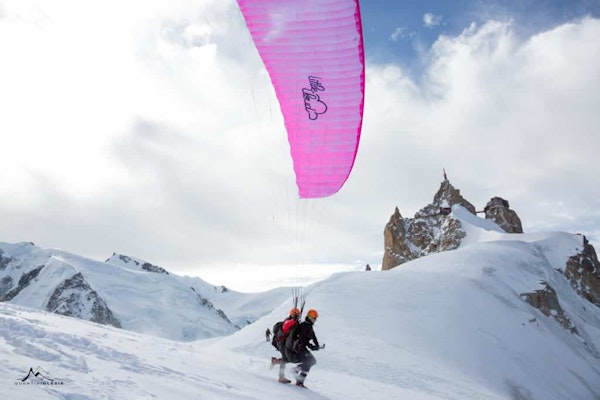
Some places in the Alps allow year-round flights, though the best conditions in the area are found between April to June and September to October. In the Mont-Blanc region, there’s a restriction to fly the mountains with a paraglider between July and August.
For some locations, a specific time of the day (morning hours, afternoon) is recommended, as it provides the best conditions for a flight.
As we mentioned before, paralpinism requires excellent weather conditions so the flight can’t be ensured beforehand. Keeping a flexible schedule and mindset is essential for this sport: you need to be ready for a sudden change of plans, and always consider a descent by foot, cable cars or other means of transport.
What equipment do you need?
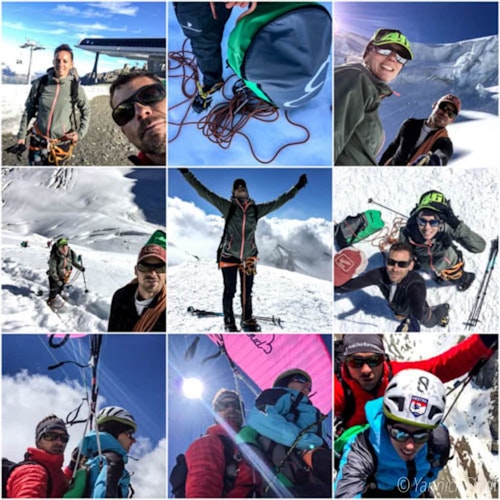
The technical equipment for paralpinism should be carefully chosen, keeping in mind that it needs to be light, comfortable and safe for the paragliding descent.
Your guide may provide technical equipment for alpinism such as helmet, harness, rope and crampons. You need to wear mountaineering boots and the usual clothing you would take for an alpine climbing trip. The temperatures can be freezing during the paragliding flight, so it’s very important to take a good pair of gloves, as well as a ski mask to keep yourself warm.
Choosing the right backpack for a paralpinism trip is very important. You will carry it on your back during the flight. Ultra-light backpacks specially designed for this kind of sports are your best choice.
Unless you are flying autonomously, the guide will be in charge of carrying the flight equipment.
Why hiring a guide for a paralpinism trip?
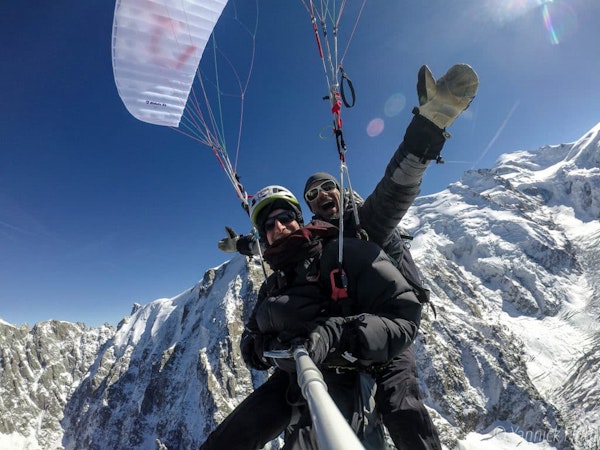
Those with little or no paragliding experience must hire a certified mountain guide and a professional paragliding instructor specialized in tandem flights for their paralpinism trip.
If you are a certified autonomous pilot, you can fly your own paraglider but you will still need the supervision of a guide to assess the weather conditions and assist you during the taking off and landing.
Flying off a high mountain is a very technical activity, which requires specific knowledge of aerological conditions (the best conditions to fly) and full control of the paraglider in all kinds of winds and situations. Besides, a local experienced pilot knows everything about the characteristics of the terrain and the authorized landing sites.
Best spots in the Alps for a paralpinism trip
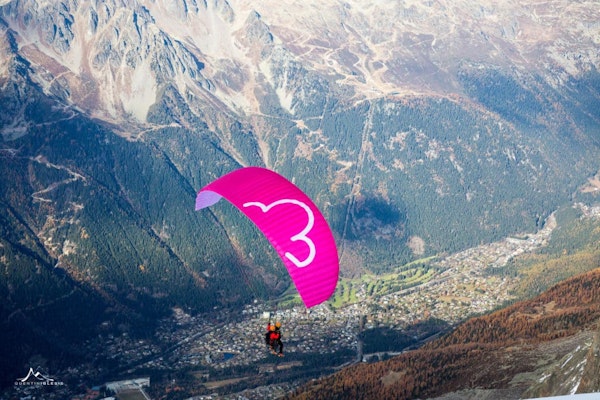
1| Mont Blanc. Reaching the top of the highest summit in the Alps (4,810 m) and then fly down to the Chamonix valley surrounded by the best alpine landscapes in Europe is the ultimate paralpinism challenge. Depending on the route, you can spend 2 to 3 days of climbing, sleeping in mountain huts along your way. If the weather conditions are ok, you’ll experience an incredible 45-minute paragliding descent! This trip requires mountaineering experience and previous acclimatization.
2| Other legendary descents in the Chamonix-Mont-Blanc area include Aiguille du Midi, Dent Blanche, Mont Blanc du Tacul and Cosmiques Ridge. Aiguille du Midi is an excellent choice for those on a tight schedule or those who want to skip the mountaineering part, as you can easily reach the summit within 30 minutes by taking the cable car, and enjoy your paragliding descent between the mountains right away!
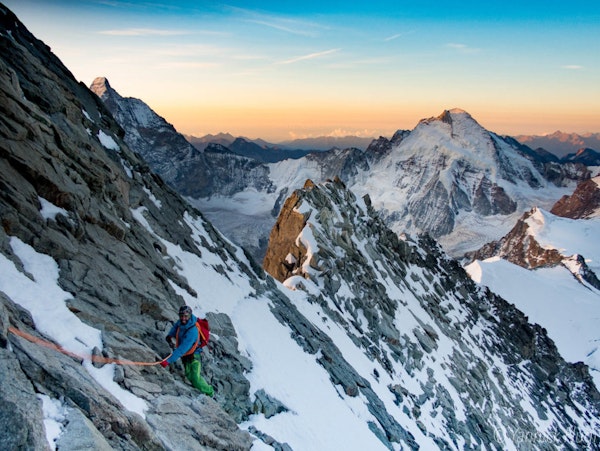
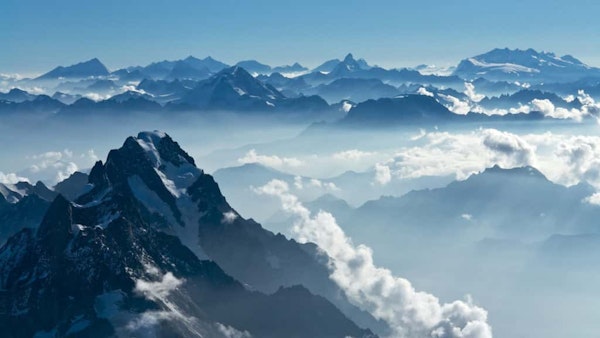
3| Jungfrau (4,158 m), in the Swiss Alps, is another classic destination for a paralpinism adventure. Starting in Interlaken, a train takes you to the Mönschjoch Hut, the place where the mountaineering part of the trip will begin. From the summit, you’ll take off and soar above the valley for 18km. This is a steep and technical mountain to climb, which includes sections of ice and snow, so you need to have previous experience on a similar peak to undertake this trip.
4| Other options of 4,000 m peaks in the Swiss Alps for a paralpinism trip include Allalinhorn and Weissmies. This climbs are more accessible and suitable for beginners, though you need to have some mountaineering experience as well. For those looking for a fairly easy approach, combining a cable car and a few hours of climb, a hike & fly trip in Breithorn is an excellent choice!
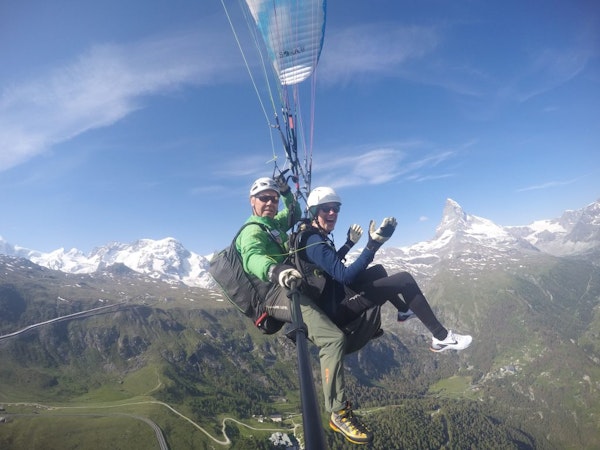
If you are mountaineer in search of adrenaline-fueled adventures, paralpinism may be just for you! Check out the paralpinism trips offered through Explore-Share and pick a guide to take you on the unique experience of flying over the Alps.
